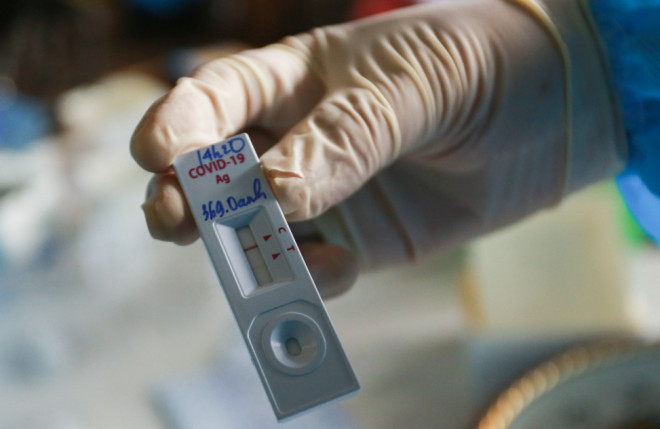Who is at higher risk of being reinfected with COVID-19?-Lifestyle
In addition to having people infected with Delta variant for the first time, infected with Omicron for the second time, in fact, there have been medical reports that recorded cases of first infected with Omicron BA.1 variant and then still re-infected with mutant strain. BA.2.
1. Why is there a re-infection with COVID-19?
Re-positive is a condition in which a person has COVID-19 have time to carry the virus SARS-CoV-2 prolonged. Some people can carry the virus for weeks. Although these cases are still positive, most are no longer capable of causing transmission after 2 weeks of infection.
Content 1. Why is there a re-infection with COVID-19? 2. Who is at higher risk of being reinfected with COVID-19?3. Can F0 re-infection be contagious to others? 4. How is COVID-19 re-infection treated?
Reinfection is a case where a patient with COVID-19 has recovered, and then re-infected. Each person has a different immune response, some people will have protective immunity for a long time after being infected or vaccinated, but some people may have a rapid decrease in protective antibody levels, leading to the possibility of infection. faster re-infection.
Especially in the case that the next infection is caused by a virus strain with different antigenic properties than the previous one, the protective antibodies of the previous infection have low protection against the latter infection.
In addition to having people infected with the Delta variant for the first time, and infected with Omicron for the second time, in fact, there have been medical reports recording cases of patient was previously infected with the Omicron BA.1 variant and then re-infected with the BA.2 variant.
2. Who is at higher risk of being reinfected with COVID-19?
People with weakened immune status or low production of neutralizing antibodies are at higher risk of reinfection. The probability of reinfection may also be higher in those with more frequent exposures than in those using effective personal infection prevention measures.
There are medical reports documenting cases of patients who were previously infected with the Omicron BA.1 variant and then re-infected with the BA.2 (stealth Omicron) variant.
3. Can re-infection with F0 infect others?
A patient re-infection is a new virus infection and illness. Therefore, they still spread the virus normally and still have the ability to infect others if effective infection prevention measures are not taken.
4. How is COVID-19 re-infection treated?
Usually, cases of reinfection will have a milder clinical course than unvaccinated people who are infected for the first time. However, there is still a certain proportion of patients who may have a severe course.
Treatment will be based on the specific disease progression of each patient.
Those with mild symptoms only need to ensure hygiene and nutrition; treat symptoms (if any). Those who unfortunately have severe development will be treated according to the pathogenesis of each lesion and apply resuscitation measures if the patient has a critical condition.
5. Is COVID-19 re-infection dangerous?
Reinfection cases will have a milder clinical course than unvaccinated people who are infected for the first time. However, it is still possible for some patients to have a severe course. In particular, post-COVID-19 problems may persist with each re-infection.
According to the Ministry of Health, up to now, the World Health Organization still considers COVID-19 in a pandemic state and is concerned that there will continue to be unforeseen variations of the SARS-CoV-2 virus.
Dr. Pham Quang Thai, Central Institute of Hygiene and Epidemiology said: “The strange thing about the SARS-CoV-2 virus when it attacks the body for the first time, it leaves a low immunity. This is the basis for the risk of reinfection. . The world and Vietnam have recorded cases of reinfection with different strains of the SARS-CoV-2 virus. In the Delta strain, the re-infection rate is 1% and the Omicron strain, the number of reinfections is higher.”
at Blogtuan.info – Source: 24h.com.vn – Read the original article here





